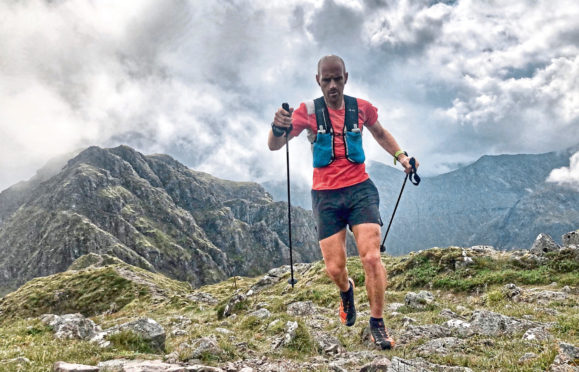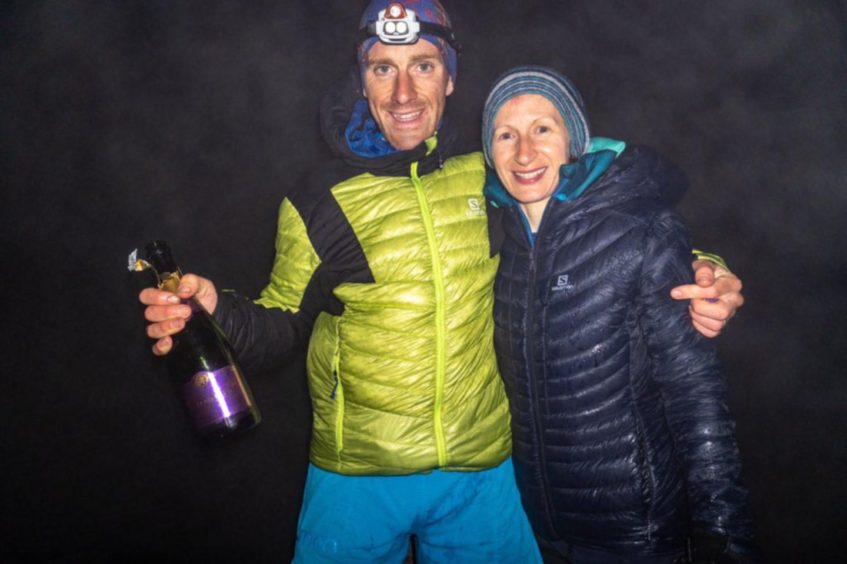
It takes most people years to finish a round of the Munros.
This summer, Scottish runner Donnie Campbell ticked off all 282 Scottish mountains with a summit of more than 3,000ft in a record-breaking 31 days, 23 hours and two minutes.
The 35-year-old ran and walked a total of 883 miles. In between the Munros, he cycled 896 miles and kayaked two sea crossings and a loch.
“I’d always wanted to do the round,” said Donnie, who lives in Inverness, “but there were some mountains I didn’t want to do so much, like the very remote ones and others that are boggy and with tough terrain. It was the non-stop round that appealed to me.”
Donnie, a former Royal Marine, is no stranger to long-distance challenges. In 2016, he set a winter record of just over 23 hours for the gruelling Ramsay Round, a 56-mile, 24-mountain trek which includes the Mamores, the Grey Corries and Ben Nevis.
The same year, he ran a record-breaking time for the 53-mile Highland Fling on the West Highland Way in six hours and 51 minutes and won the British Trail Championships. He has also crossed the Namib Desert more than 155 miles on foot and run 200 miles from Glasgow to Skye.
Donnie’s goal of a continuous Munro round was a year in the planning. He thought 33 days was a “good but ambitious” target.
The previous record of 39 days, nine hours and six minutes had been set by Stephen “Spyke” Pyke in 2010.
“Spyke’s record was incredible,” Donnie said, “but I wanted to push my limits. I was able to look at Spyke’s route details – and then I made my own adaptations.”
During the challenge, wife Rachael followed him in a motorhome, where Donnie was able to sleep. On August 1, Donnie summited his first mountain of the round, the Isle of Mull’s only Munro, Ben More. He then kayaked from Fishnish to Lochaline on the mainland before ticking off Sgurr Thuilm, Sgurr nan Coireachan and Gulvain. Heading east to Lochaber and then through the Cairngorms, Donnie’s traverse finally took him to the most easterly Munro of Mount Keen, on day eight.
Next came the southern Highlands, including the most southerly Munro of Ben Lomond, reached by a kayak from Inverbeg to Rowardennan on Loch Lomond. He returned to the north-west and took in the Cuillin on Skye, after another kayak from Glenelg to Kylerhea.
“The Cuillin has the best and most technical Munros,” said Donnie, who spent his childhood on Skye. “It was where I did my first Munros decades ago and where I still feel at home.”
His final Munro, on September 2, was the most northerly, Ben Hope, in Sutherland. In total, Donnie ascended 413,854ft, the equivalent of 14 times the height of Mount Everest.
Donnie spent 12 hours a day running, cycling or kayaking. In one 24-hour period, he reached an incredible 18 Munros, from Slioch near Kinlochewe to Ben Wyvis near Dingwall. After only 30 minutes of sleep, he then cycled to Am Faochagach, near Ullapool, and completed another 10 Munros to finish on Ben Hope. Agonisingly, on day 29, he was also forced to climb the same Munro twice.
“The first time, I reached a large cairn, which I thought was the summit,” said Donnie, “but my tracker later showed I should have run another 200 metres to a small pile of stones.”
The hardest day for Donnie was the 17th: “It was the low point. I’d been going hard and it felt relentless and I was only half-way. At no point did I think I would give up, but I had to work hard to keep going. I focused on the routine of eat, run, sleep.”
For the adventurer, who raised more than £12,000 for the British Red Cross Society, the highlights were the “amazing views, day after day” and the people who supported him.
“Rachael was amazing as she basically allowed me to do nothing but run, eat and sleep,” said Donnie. “Friends, including Spyke, came and joined me for different Munros. I am grateful to all of them.
“It was by far the hardest challenge I have ever done, but also the coolest and most fun.”

Enjoy the convenience of having The Sunday Post delivered as a digital ePaper straight to your smartphone, tablet or computer.
Subscribe for only £5.49 a month and enjoy all the benefits of the printed paper as a digital replica.
Subscribe © PETER JOLLY NORTHPIX
© PETER JOLLY NORTHPIX